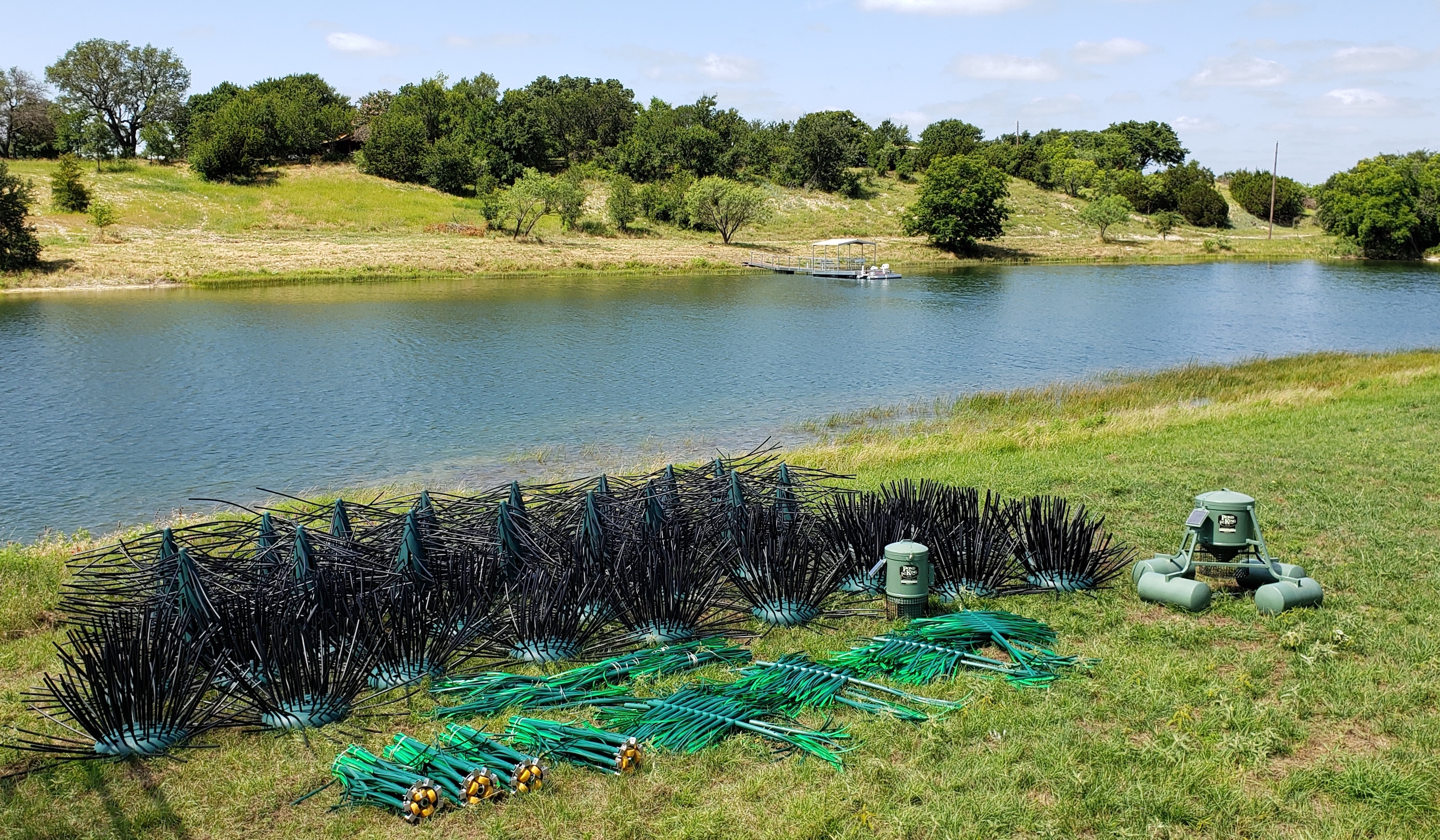Habitat availability within your fishery is one of the most critical aspects of pond management to ensure the growth and development of trophy-class Bass. Depending on the life stage of the Bass and time of year, the type of habitat these fish utilize can vary drastically. Life stage and season, coupled with the approximate size of the fishery, are the key criteria for selecting the correct habitat to support your pond management plan.
Key factors in habitat selection: life-stage and water depth
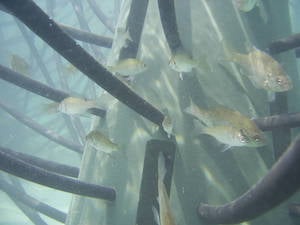
Juvenile fish avoiding predation
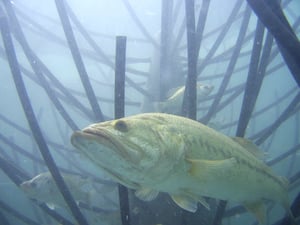
Adult Bass lying in ambush
The need for habitat varies depending on the life stages of your Bass: As juveniles, they need places to hide so they can avoid predation while also finding other smaller fish upon which to feed. As adults, if you want to raise truly fat fish, your Bass will need places to lie in wait to ambush their next meal while expending as few calories as possible. Diving further into this thought process, based on the time of year and water temperatures, the location and water depth that habitat is placed in varies no matter the size class. This is why it is so important to have diverse habitat spread throughout the entire water column.
- At the shallow shoreline, create spawning opportunities and place habitat near those areas to provide a nursery area for your newly hatched fish to evade predation.
- In moderate water depths, use habitat that will give juvenile fish a place to begin feeding on your smaller fish while still being able to avoid larger predators themselves.
- Then finally, depending on the depth of the body of water, use deep water habitat to provide areas that offer growth to your fish during the heat of the summer and depths of winter.
Habitat complexity: an inverse relationship to water depth
Now that we have established the need for habitat throughout the water column, let's discuss the different types of habitat that are most beneficial in these varying water depths. Probably the simplest way to think about this is that as water depths increase, habitat complexity decreases. That doesn't mean placing less habitat in deeper water than you do in shallow areas. When habitat complexity is discussed, usually, what is meant is how tightly woven the habitat is. The denser the habitat, the more small passages for your young fish to avoid predation. This type of habitat is usually natural aquatic vegetation like American Pondweed, Coontail, Lily Pads, Chara, or brush piles made out of treetops or small shrubs.
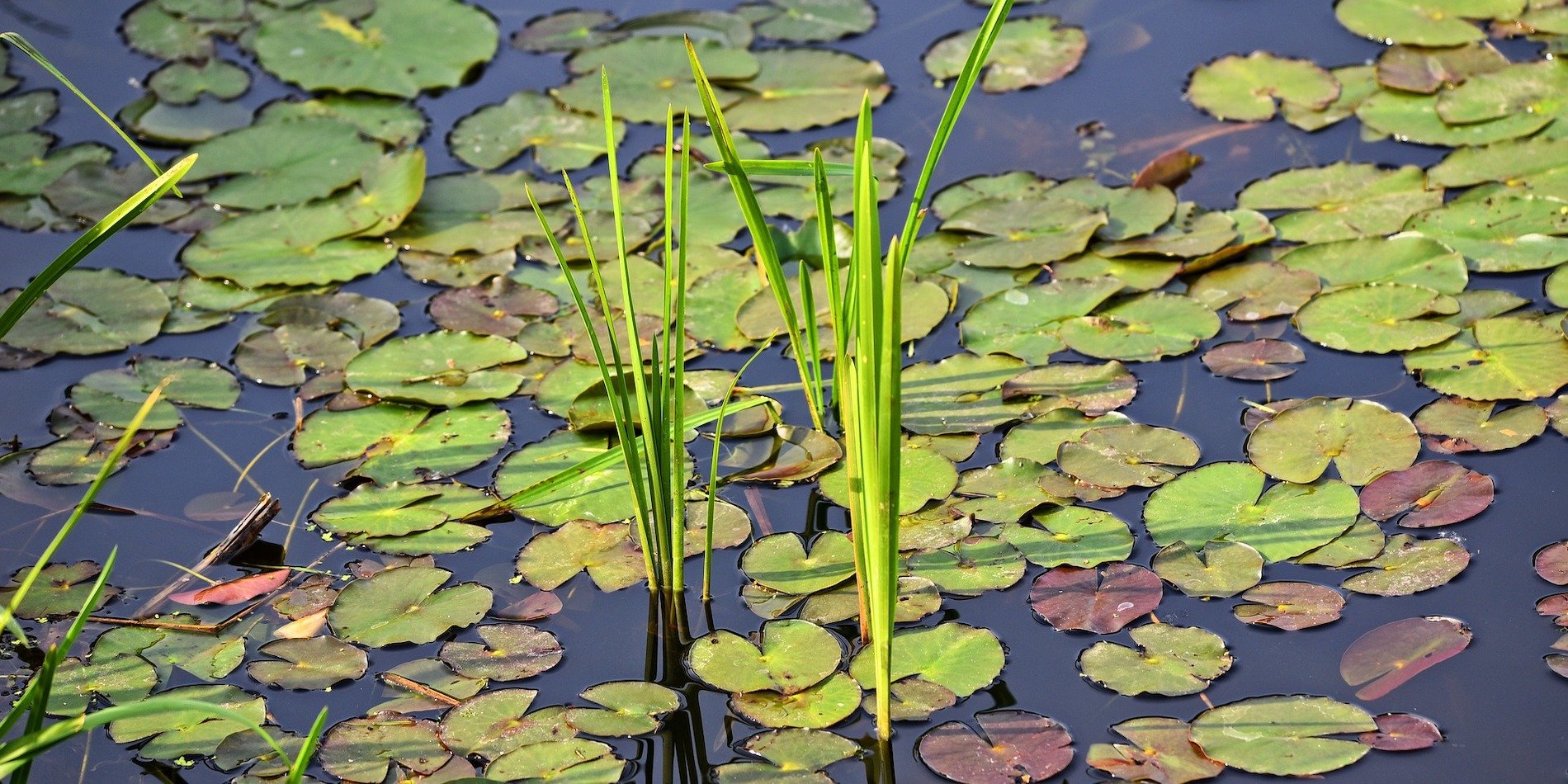
As habitat needs turn to more of a hunting tool for your larger Bass, the passages need to become large enough to allow them to hide then quickly navigate to catch their prey. Some examples of this type of habitat are flooded timber, laydowns constructed out of tree limbs, or brush piles made of young trees. This, however, doesn't mean that complex habitat isn't needed in deepwater settings or that simple structures aren't necessary in shallow water, there is just a greater need for habitat complexity in shallower areas for your fry and juvenile fish.
Habitat placement: location, location, location
Remember when they used to say the three most important factors in selling real estate were location, location, and location. Well, that same thinking applies to the placement of habitat in your fishery. Equipped with an understanding of which types of habitat should be utilized for various depths along the water column, you now need to take into account the overall depth of your pond and the bottom contour to pick the final placement of aquatic habitat. Smaller tanks and ponds (less than 5 acres) usually have depths that are around 12' or less and typically have minimal bottom topography. Because of this, small to moderate-sized brush piles can be placed almost anywhere in the shallow to moderate water depths to provide habitat for your Bass.
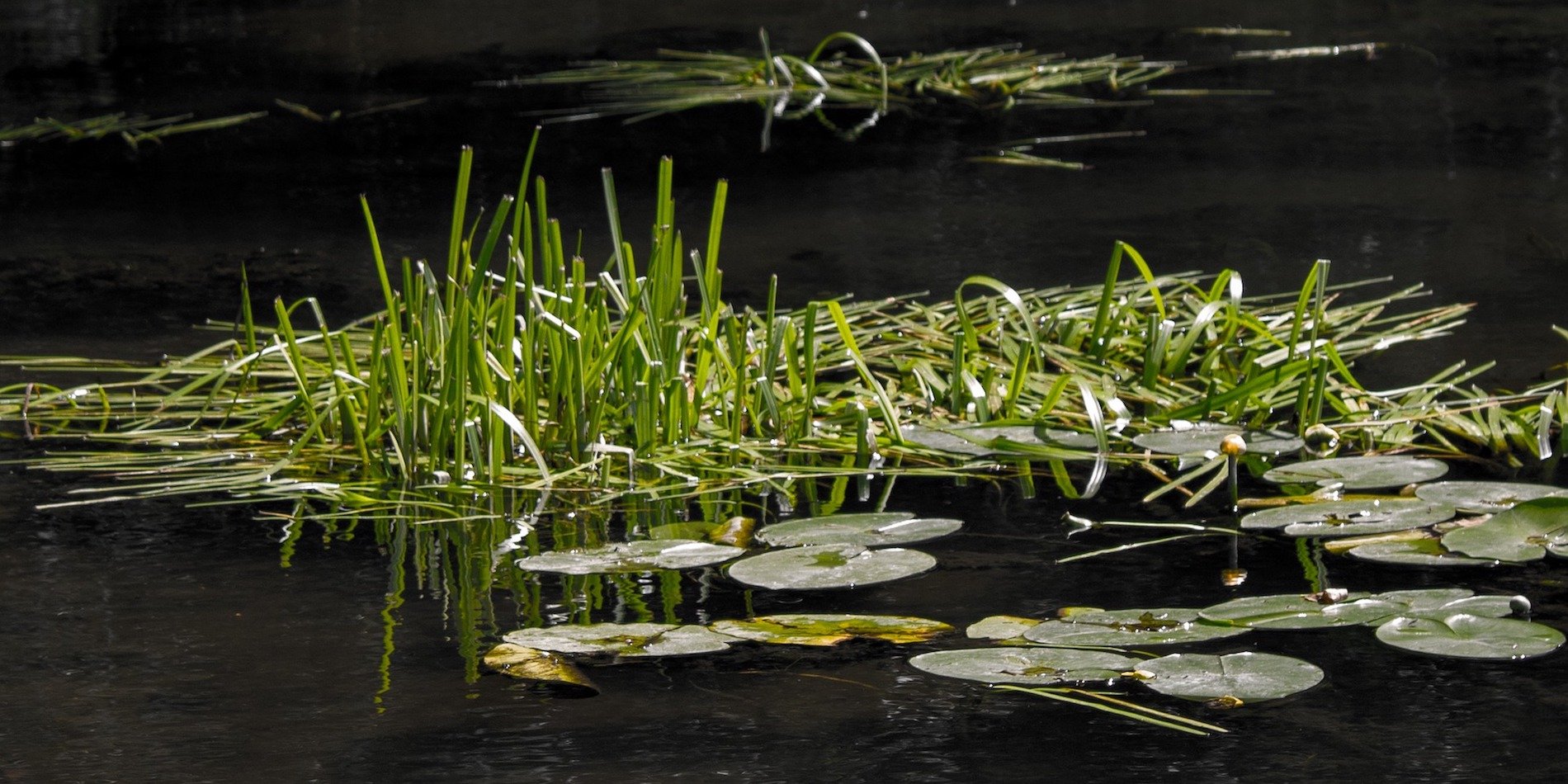 Grass mats usually show up throughout the whole pond and need to be controlled as not to provide too much nursery habitat. When we start talking about larger ponds and even lakes (greater than 5 acres), habitat placement becomes a bit more methodical. Certain areas of grass mats should be left alone to provide ample nursery habitat. Trees along the shoreline can be hinge cut to fall in the water (shown below); the canopy will act as moderate water habitat, and the trunk will serve as a lay down to attract larger Bass.
Grass mats usually show up throughout the whole pond and need to be controlled as not to provide too much nursery habitat. When we start talking about larger ponds and even lakes (greater than 5 acres), habitat placement becomes a bit more methodical. Certain areas of grass mats should be left alone to provide ample nursery habitat. Trees along the shoreline can be hinge cut to fall in the water (shown below); the canopy will act as moderate water habitat, and the trunk will serve as a lay down to attract larger Bass.
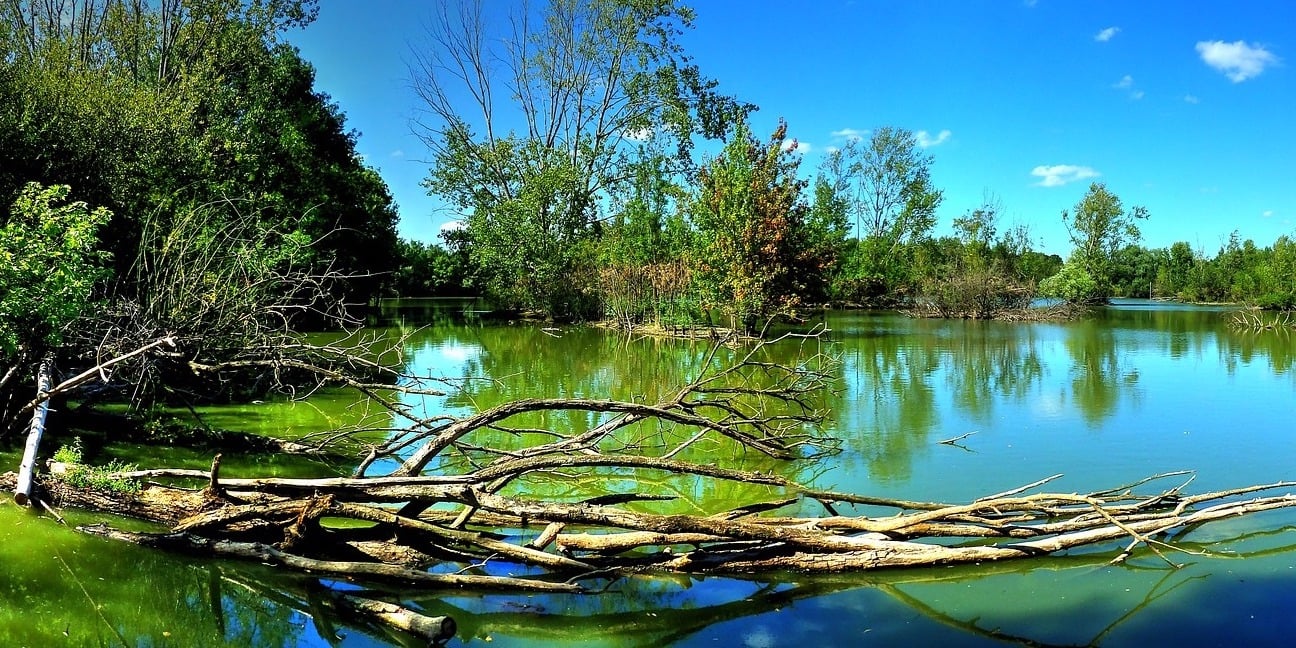 The cut trees will also provide a corridor for juvenile fish to move from shallow water to deeper areas. Brush piles can also be sunk near the edges of drop off or natural points extending out into the lake. Moving out to deeper water, rock formations, vertical structures such as inundated timber and creek channels are all areas that can hold larger predators with additional habitat placed in the vicinity to help create fishing hot spots.
The cut trees will also provide a corridor for juvenile fish to move from shallow water to deeper areas. Brush piles can also be sunk near the edges of drop off or natural points extending out into the lake. Moving out to deeper water, rock formations, vertical structures such as inundated timber and creek channels are all areas that can hold larger predators with additional habitat placed in the vicinity to help create fishing hot spots.
The Pros and Cons of Natural Structure and Artificial Habitat
No fisheries habitat discussion would be complete without evaluating the pros and cons of both natural and artificial habitat.
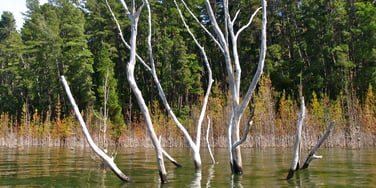
Natural structures are often easy to come by and provide excellent habitat for the first few years. After that, they begin to deteriorate and lose their effectiveness as their complexity decreases. Additionally, natural structures can be hard to handle and require an extensive amount of weight to sink and hold them in place.
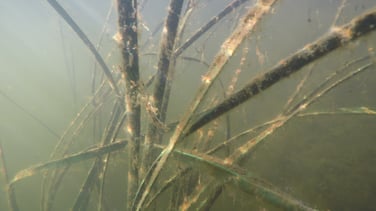 Artificial structures, on the other hand, last much longer and provide the same amount of structure and complexity throughout their life as they do on the day they were installed. In fact, due to the growth of periphytons, some types of artificial habitat can become even more beneficial with the passage of time. Additionally, artificial habitat is easier to handle and often has the weight integrated into the unit to sink and hold it in place. The con to artificial habitat is that if a large project is done all at once, it can get a bit pricey. However, when viewed over the entire life span, the price difference is much less significant when you begin to add up the labor and resources required to collect, construct and install natural habitat structures every few years to maintain habitat requirements.
Artificial structures, on the other hand, last much longer and provide the same amount of structure and complexity throughout their life as they do on the day they were installed. In fact, due to the growth of periphytons, some types of artificial habitat can become even more beneficial with the passage of time. Additionally, artificial habitat is easier to handle and often has the weight integrated into the unit to sink and hold it in place. The con to artificial habitat is that if a large project is done all at once, it can get a bit pricey. However, when viewed over the entire life span, the price difference is much less significant when you begin to add up the labor and resources required to collect, construct and install natural habitat structures every few years to maintain habitat requirements.
Pond King has created various types of artificial structures that can be utilized throughout the entire water column and meet all the requirements that we have discussed. If you have any other questions on habitat types or placement or would like to develop a plan for habitat installations, feel free to contact us.
Happy Fishing!


